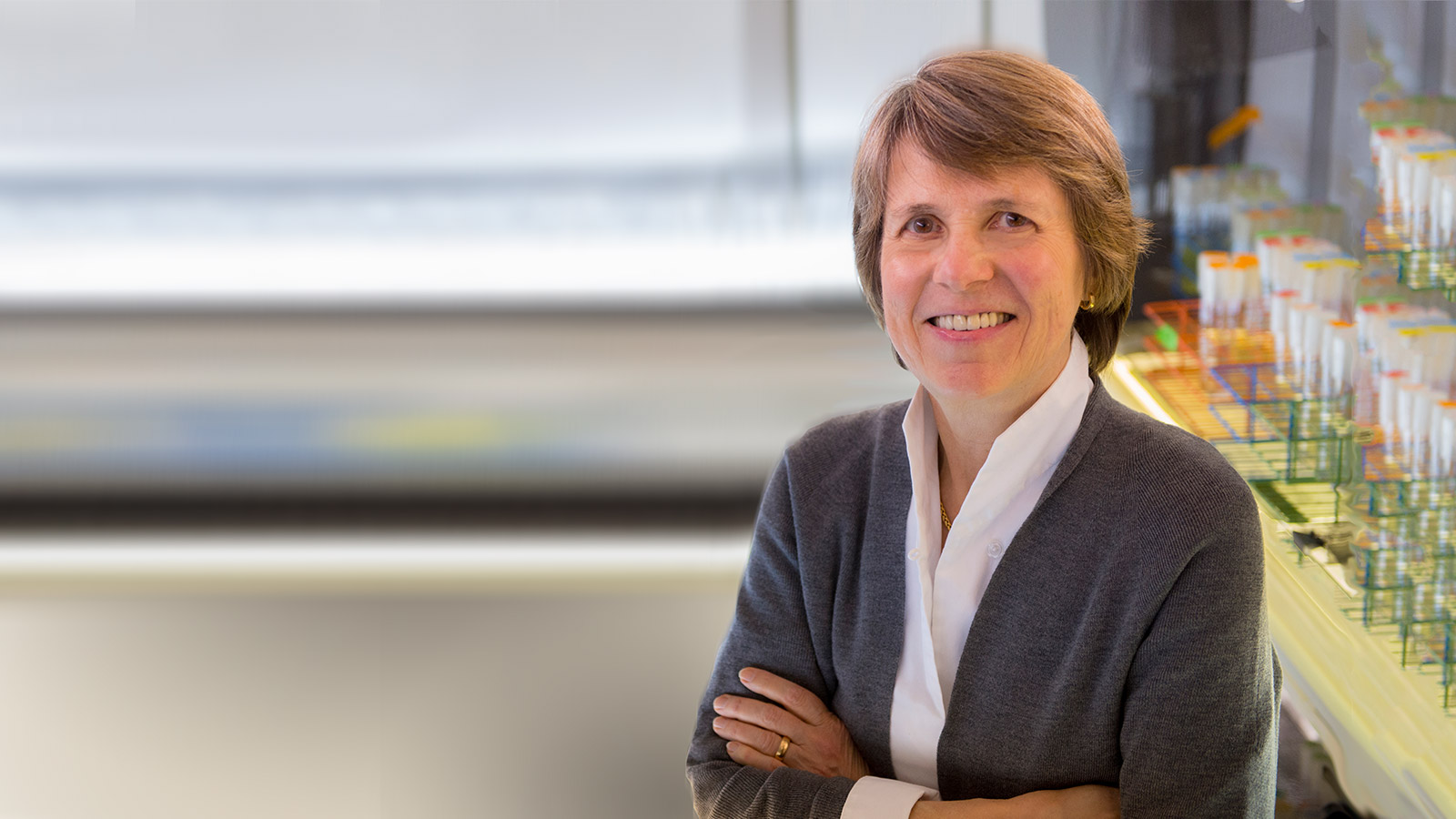Education
- PhD, 1974, SUNY Albany
Research Summary
Our goal is to understand the ecology and evolution of ocean microbes and how they influence global biogeochemical cycles. We focus on the cyanobacterium Prochlorococcus, which is the smallest and most abundant microbe in ocean ecosystems — sometimes accounting for half the total photosynthetic biomass. We use this model system to study life across all scales — from the genome to the ecosystem.Awards
- Crafoord Prize, 2019
- Generalitat of Catalonia, Ramon Margalef Prize in Ecology, 2013
- American Association for the Advancement of Science, Fellow, 2012
- National Medal of Science, 2011
- National Academy of Sciences, Alexander Agassiz Medal, 2010
- National Academy of Sciences, Member, 2003
- John Simon Guggenheim Memorial Foundation, Guggenheim Fellowship, 1997
- American Academy of Arts and Sciences, Fellow, 1992
Key Publications
- Metabolic evolution and the self-organization of ecosystems. Braakman, R, Follows, MJ, Chisholm, SW. 2017. Proc Natl Acad Sci U S A 114, E3091-E3100.
doi: 10.1073/pnas.1619573114PMID:28348231 - Prochlorococcus: the structure and function of collective diversity. Biller, SJ, Berube, PM, Lindell, D, Chisholm, SW. 2015. Nat Rev Microbiol 13, 13-27.
doi: 10.1038/nrmicro3378PMID:25435307 - Single-cell genomics reveals hundreds of coexisting subpopulations in wild Prochlorococcus. Kashtan, N, Roggensack, SE, Rodrigue, S, Thompson, JW, Biller, SJ, Coe, A, Ding, H, Marttinen, P, Malmstrom, RR, Stocker, R et al.. 2014. Science 344, 416-20.
doi: 10.1126/science.1248575PMID:24763590 - Bacterial vesicles in marine ecosystems. Biller, SJ, Schubotz, F, Roggensack, SE, Thompson, AW, Summons, RE, Chisholm, SW. 2014. Science 343, 183-6.
doi: 10.1126/science.1243457PMID:24408433
Recent Publications
- Global niche partitioning of purine and pyrimidine cross-feeding among ocean microbes. Braakman, R, Satinsky, B, O'Keefe, TJ, Longnecker, K, Hogle, SL, Becker, JW, Li, RC, Dooley, K, Arellano, A, Kido Soule, MC et al.. 2025. Sci Adv 11, eadp1949.
doi: 10.1126/sciadv.adp1949PMID:39752493 - Emergence of metabolic coupling to the heterotroph Alteromonas promotes dark survival in Prochlorococcus. Coe, A, Braakman, R, Biller, SJ, Arellano, A, Bliem, C, Vo, NN, von Emster, K, Thomas, E, DeMers, M, Steglich, C et al.. 2024. ISME Commun 4, ycae131.
doi: 10.1093/ismeco/ycae131PMID:39660012 - Novel isolates expand the physiological diversity of Prochlorococcus and illuminate its macroevolution. Becker, JW, Pollak, S, Berta-Thompson, JW, Becker, KW, Braakman, R, Dooley, KD, Hackl, T, Coe, A, Arellano, A, LeGault, KN et al.. 2024. mBio 15, e0349723.
doi: 10.1128/mbio.03497-23PMID:39422514 - Chitin degradation by Synechococcus WH7803. Capovilla, G, Castro, KG, Collani, S, Kearney, SM, Kehoe, DM, Chisholm, SW. 2023. Sci Rep 13, 19944.
doi: 10.1038/s41598-023-47332-0PMID:37968300 - Production and cross-feeding of nitrite within Prochlorococcus populations. Berube, PM, O'Keefe, TJ, Rasmussen, A, LeMaster, T, Chisholm, SW. 2023. mBio 14, e0123623.
doi: 10.1128/mbio.01236-23PMID:37404012 - Environmental and Taxonomic Drivers of Bacterial Extracellular Vesicle Production in Marine Ecosystems. Biller, SJ, Coe, A, Arellano, AA, Dooley, K, Silvestri, SM, Gong, JS, Yeager, EA, Becker, JW, Chisholm, SW. 2023. Appl Environ Microbiol 89, e0059423.
doi: 10.1128/aem.00594-23PMID:37199672 - Chitin utilization by marine picocyanobacteria and the evolution of a planktonic lifestyle. Capovilla, G, Braakman, R, Fournier, GP, Hackl, T, Schwartzman, J, Lu, X, Yelton, A, Longnecker, K, Soule, MCK, Thomas, E et al.. 2023. Proc Natl Acad Sci U S A 120, e2213271120.
doi: 10.1073/pnas.2213271120PMID:37159478 - Draft genomes of three closely related low light-adapted Prochlorococcus. Berta-Thompson, JW, Thomas, E, Cubillos-Ruiz, A, Hackl, T, Becker, JW, Coe, A, Biller, SJ, Berube, PM, Chisholm, SW. 2023. BMC Genom Data 24, 11.
doi: 10.1186/s12863-022-01103-4PMID:36829130 - Novel integrative elements and genomic plasticity in ocean ecosystems. Hackl, T, Laurenceau, R, Ankenbrand, MJ, Bliem, C, Cariani, Z, Thomas, E, Dooley, KD, Arellano, AA, Hogle, SL, Berube, P et al.. 2023. Cell 186, 47-62.e16.
doi: 10.1016/j.cell.2022.12.006PMID:36608657 - Filter Plating Method for Rendering Picocyanobacteria Cultures Free of Heterotrophic Bacterial Contaminants and Clonal. Kearney, SM, Coe, A, Castro, KG, Chisholm, SW. 2022. Front Microbiol 13, 821803.
doi: 10.3389/fmicb.2022.821803PMID:35250937
Multimedia

